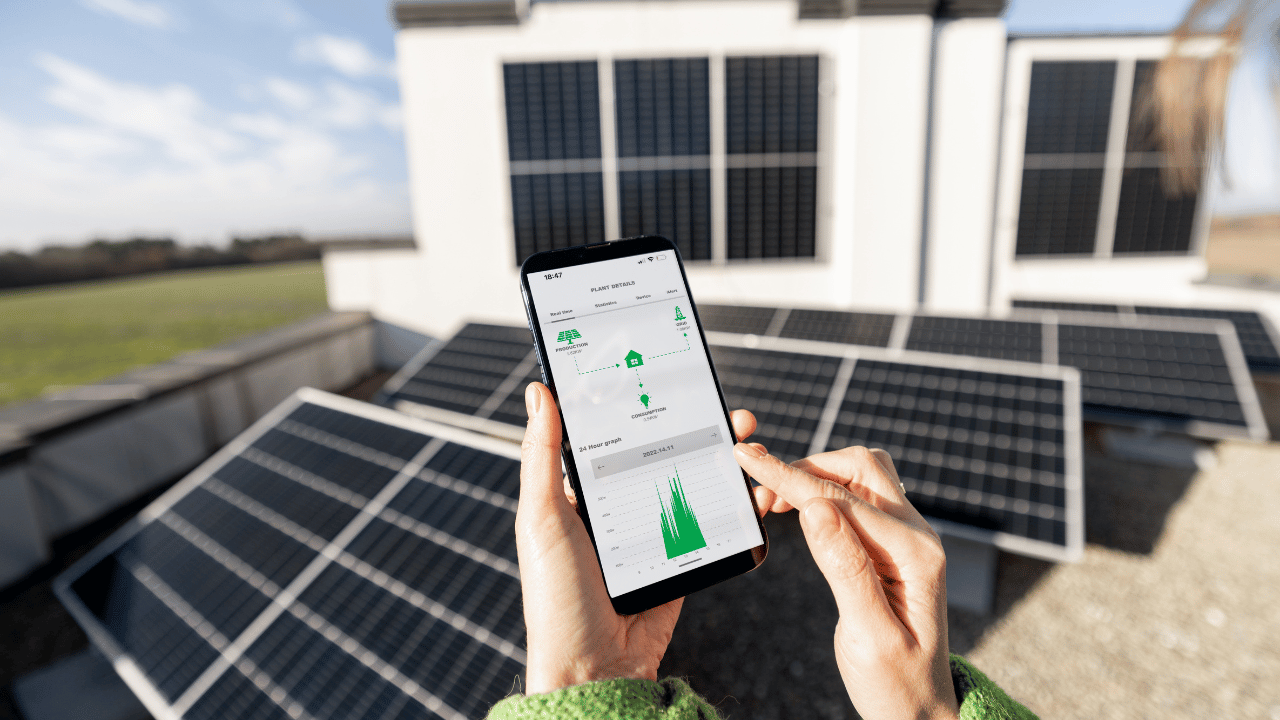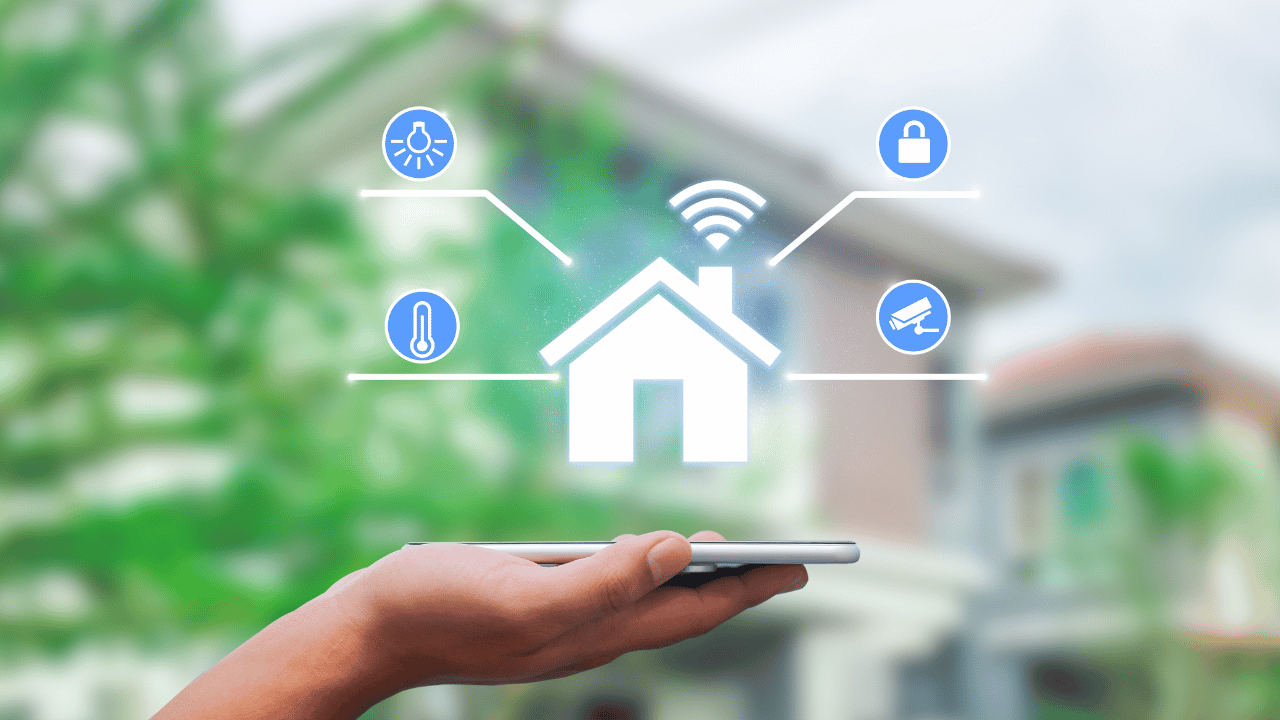Last Updated on September 11, 2023 by Pro Handyman Australia – Editorial Team
Home automation is an exhilarating frontier for countless individuals. However, as with any budding technology, it’s rife with myths, misunderstandings, and exaggerated tales.
Unraveling Common Myths
We’ve tackled prevalent misconceptions about smart homes to help you navigate the realm of home automation with clarity and confidence, ensuring that you make well-informed decisions tailored to your needs.
Dispelling Home Automation Myths

The Age Factor in Home Automation
Contrary to popular belief, home automation isn’t exclusive to newer homes. Regardless of your residence’s age, our state-of-the-art smart home systems can be integrated seamlessly. The only requirement? Electricity. If you’re hesitant or uncertain about compatibility, it’s always a good idea to consult with an electrician. These professionals can provide insights into the most suitable solutions tailored to your living space and lifestyle. Once you’ve pinpointed the ideal home automation system, get it installed, and before you know it, you’ll be eager to share your newfound enthusiasm with friends and acquaintances.
The Complexity Conundrum of Smart Homes
The terms “home automation” or “smart home” might conjure up images of self-activating TVs or intricate panels filled with circuitry, wires, and perplexing buttons. However, this couldn’t be further from the truth. The primary purpose of home automation is simplification, not complication. Take, for instance, our user-friendly systems designed for effortless navigation and integration into your daily routine. More often than not, all that’s required is a basic setup of schedules through a straightforward app on your preferred device. Once established, these schedules autonomously perform their tasks, sparing you the mental load. In essence, if you’re proficient with mobile applications, managing home automation will be a breeze.
The Misconception of Cost and Space
One predominant stereotype about home automation revolves around its perceived exorbitance, largely fueled by cinematic portrayals and pop culture narratives. This portrayal suggests that only the affluent can afford the luxury of a smart home, leaving it out of reach for the typical household. Thankfully, this notion is demonstrably incorrect. Embarking on the journey of home automation doesn’t necessitate a hefty upfront investment. Initiating the process is as simple as acquiring a home hub, some of which are surprisingly affordable, akin to the Samsung SmartThings Hub v3. Such hubs serve as the nexus for any subsequent smart devices you wish to incorporate. With this foundational component, you can progressively expand your automation landscape at a pace congruent with your lifestyle and budget. Incremental additions, like integrating a Google Home speaker, can progressively enhance the system without breaking the bank. Adopting this phased approach not only makes the endeavor economically feasible but also ensures you’re making informed decisions based on firsthand experience, ensuring value for every dollar spent.
Automate Everything or Nothing at All

Embrace the fact that home automation isn’t a rigid all-or-nothing concept. Instead, it’s about tailoring automation to suit your preferences, dwelling, and lifestyle. The beauty lies in the flexibility to cherry-pick what aspects you wish to automate. For those cautious about diving in headfirst, it’s entirely acceptable to begin with a single light switch or power outlet, testing the waters before expanding. The key is to find the balance that works uniquely for you.
The Investment Perspective
The misconception that home automation isn’t worth the investment is easily debunked. While it’s true that setting up automation demands an initial time commitment—potentially a few weeks for comprehensive integration—what follows is the significant time-saving advantage it offers in return. Alarm dot Com estimates that a smart home can save you up to 30 minutes daily, translating to over 182 hours annually, or a whole week’s worth of time. Moreover, financially, home automation is a smart move. Reports indicate that smart home technology can increase property value by up to 5%. Therefore, the return on investment is substantial, swiftly outweighing the setup costs and essentially letting your smart devices pay for themselves.
Addressing Privacy Concerns
With media portraying technology’s worst-case scenarios, privacy worries about smart homes have arisen. Shows like “Mr. Robot” and “Black Mirror” have managed to inject anxiety into the public consciousness. It’s important to remember that while these narratives offer gripping drama, they often sensationalize the potential risks. The reality is that the likelihood of a quick, dramatic hacking as seen on screen is minuscule due to stringent software safeguards put in place by manufacturers. While the risk is low, steps can be taken for added security. Extensive research by AT&T, in partnership with ADT Security, provides actionable steps to fortify smart home safety. Remember, customization is key. If a particular product makes you uncomfortable, it’s perfectly reasonable to omit it from your personal automation setup.
Simplicity Trumps Complexity
Ease of use is at the core of modern technology, eradicating the need for IT expertise to navigate smart homes. With a simple app installation, your smartphone effortlessly connects to your automation hub, granting you swift control access. Compatibility is seamless, especially when both your device and hub share the same wireless network. Even tasks that require professional installation, like smart thermostats, are easily managed with minimal hassle and cost. Remember that not all systems are created equal. A quick search can reveal top-rated smart home devices based on user-friendly designs.
The Freedom to Choose

Resist the pressure to embrace home automation prematurely. The decision to integrate should align with your personal circumstances and preferences. Renters might encounter limitations imposed by landlords, making certain changes impractical without approval. Committing to significant changes only makes sense if your long-term residency is assured. Starting small offers significant advantages. The simpler the beginning, the more room for gradual expansion, adapting to your unique lifestyle and space. It’s perfectly valid if full automation isn’t your immediate goal. Build up your automation toolkit step by step, allowing for as much or as little automation as you desire. Your pace, your comfort, your home.
Lack of Variety: Beyond the Giants
While Google and Amazon reign supreme in the realm of home automation, assuming they are the sole contenders would be akin to believing that only Burger King and McDonald’s serve hamburgers in the United States. These two giants aren’t the exclusive players in the game. Names like Logitech, ADT, and Samsung offer a diverse array of smart home devices with unique connectivity options. Often, these alternatives cater to specific needs that Amazon and Google might not fulfill. A glance beyond the titans reveals a dynamic market with options that might better align with your preferences.
Balancing Style and Substance
In a world teeming with gimmicks, consumers seek substance. A product built solely on its gimmickry rings hollow. However, the digital age empowers consumers to share their experiences through reviews, helping identify products that seamlessly blend style with functionality. The era of all flash and no substance is waning, allowing devices that truly deliver value to shine. Through diligent research, you can sift through the hype to uncover devices that elevate your smart home experience.
Navigating Connectivity Challenges
Seamless connectivity doesn’t always translate to instant connection. Establishing links between various devices demands a balance between ease and security. Just as connecting a phone to WiFi requires steps to ensure unauthorized access is thwarted, smart home items require precautionary measures. While connecting devices from the same manufacturer is typically smoother, even different-brand connections can be straightforward. Understanding the process and setting realistic expectations will mitigate potential frustration.
Unraveling Savings Claims
Savings claims can be enticing, especially in the context of smart thermostats. However, it’s vital to dissect these claims and manage expectations. Smart thermostat companies might tout substantial savings, but the reality is more nuanced. The extent of savings hinges on various factors: the efficiency of your heating and cooling systems, user-defined settings, and other variables that influence energy consumption. A smart thermostat plays a role in savings, but its impact is inherently tied to the functionality of the overall HVAC system and your energy-conscious habits.
Smart Homes are Energy Draining

Contrary to this belief, one of the core benefits of smart homes is energy efficiency. Systems like smart thermostats, lights, and energy monitors optimize power consumption, ensuring minimal waste. In many instances, homes have reported a significant drop in energy bills post the adoption of smart devices.
The Technology is Still Too Young
While the concept of a fully automated home might seem futuristic, the foundational technologies have been around for years. They’ve been tested, refined, and re-tested to ensure reliability and efficiency. Waiting for the technology to mature isn’t a reason to hold back anymore. It’s already here, and it’s robust.
Smart Homes Compromise on Privacy
Data privacy concerns are valid. However, leading smart home device manufacturers are investing heavily in advanced encryption technologies. By adhering to best practices, like regular software updates and using strong, unique passwords, homeowners can significantly enhance their security.
Smart Devices are Too Complicated
Modern smart home devices prioritize user experience. With intuitive apps, voice controls, and straightforward installation processes, even those who aren’t tech enthusiasts can effortlessly integrate and operate these devices. Manufacturers are keen on ensuring that their products cater to all, not just the tech-savvy.
Smart Homes are for the Affluent
The idea that smart homes are only for the rich is a dated one. The market is inundated with a plethora of options suited for various budgets. From affordable smart bulbs to reasonably priced security systems, the smart home sector is diverse in its offerings. More importantly, these devices often lead to long-term savings on energy bills, making them investments rather than expenditures.
So, Why Invest in a Smart Home Now?

- Return on Investment: As mentioned, many smart devices lead to substantial savings over time. While there’s an initial cost, the monthly savings on utilities ensure a quick return on investment.
- Enhanced Security: Smart security cameras, motion sensors, and smart locks provide homeowners peace of mind, knowing their homes are safeguarded with the latest tech.
- Future-Proofing: As our world becomes more interconnected, homes that already have smart integrations will see an increase in market value. By investing now, you’re ensuring your home remains competitive in future markets.
- Convenience: Imagine controlling your home’s temperature, lighting, and security systems with just a voice command or a tap on your phone. Smart homes make this a reality, adding unparalleled convenience to your life.
- Environmental Impact: With the global push towards sustainability, smart homes play a pivotal role in reducing carbon footprints. Automated devices ensure optimal energy use, making your home eco-friendlier.
It’s understandable to be wary of new technological advances. However, by addressing misconceptions head-on and understanding the tangible benefits, it becomes evident that smart homes are more than just a trend; they’re the future. The longer you wait, the more you stand to lose out on the myriad benefits these innovations offer. It’s time to embrace the smart home revolution and enjoy the conveniences of modern living.
Advantages of Embracing the Smart Home Revolution
In the age of rapid technological advancement, the dream of living in a smart home is becoming a reality for many. Gone are the days when home automation seemed like a distant future or a scene from a sci-fi movie. Today, more homeowners are discovering the plethora of benefits that come with integrating smart devices into their daily routines. This blog delves deep into the manifold advantages of adopting a smart home system.

1. Unparalleled Convenience
Imagine being able to control almost every aspect of your home using just your voice or a simple tap on your smartphone:
- Adjusting the thermostat without leaving your couch.
- Checking who’s at the door without peeping through a peephole.
- Turning off the lights without getting out of bed.
These conveniences, once considered luxuries, are now readily available thanks to smart home technology.
2. Boosted Home Security
Smart homes significantly enhance home security:
- Smart cameras provide real-time footage of your home’s surroundings and interiors.
- Motion sensors detect movement and can send instant alerts to your phone.
- Smart locks allow for keyless entries, ensuring that you never have to worry about losing your keys or unauthorized access.
Combining these devices gives homeowners a holistic security system, ensuring peace of mind whether they’re at home or on vacation.
3. Energy Efficiency and Cost Savings
A compelling advantage of smart homes is their potential for energy conservation:
- Smart thermostats learn your routine and adjust the heating or cooling accordingly, ensuring optimal temperatures and energy use.
- Smart lighting systems can be programmed to turn off when no one is in the room.
- Energy monitors provide insights into your consumption patterns, allowing for better energy management.
Over time, these efficiencies translate into significant savings on utility bills.
4. Enhanced Accessibility for Differently-Abled Individuals
Smart homes are a boon for individuals with mobility challenges or disabilities:
- Voice commands can perform tasks like opening doors, adjusting lights, or changing TV channels.
- Sensors can be programmed to automate routine tasks based on specific triggers.
This technology can vastly improve the quality of life and independence for many differently-abled individuals.
5. Home Value Appreciation
Properties equipped with smart home technologies often see an increase in market value. As more homebuyers prioritize modern amenities, homes that are already tech-integrated become increasingly appealing, often fetching higher prices in the real estate market.
6. Seamless Integration and Centralized Control
One of the most striking features of a smart home is the ability to integrate various devices and manage them from a centralized platform. With a single app, you can control your home’s lighting, security, entertainment systems, and more. This seamless integration streamlines operations and offers a cohesive user experience.
7. Proactive Maintenance and Alerts
Smart homes can detect issues before they become bigger problems:
- Water sensors can alert homeowners of potential leaks.
- Smoke detectors can send notifications even before a fire gets out of hand.
- Appliance monitors can indicate when a device is malfunctioning.
Such proactive alerts can prevent costly repairs and damages in the long run.
8. Customization to Fit Your Lifestyle
Smart homes are not one-size-fits-all. They can be customized to suit individual lifestyles and preferences. Whether you’re an avid movie watcher wanting a smart entertainment system, a working professional needing efficient home office setups, or a parent desiring child-friendly automation, there’s something for everyone.
The smart home revolution is more than just a fleeting trend; it’s a testament to how technology can improve our daily lives on multiple fronts. From the undeniable convenience and enhanced security to the promise of a greener planet and reduced utility bills, the benefits are manifold. If you haven’t already, now might be the perfect time to embrace the smart home wave and experience the wonders of modern living.
Conclusion

The world of smart home technology may seem daunting, but by delving deeper, we can distinguish reality from fantasy. Just like any complex concept, breaking it down into manageable pieces is key. Think of it as taking one step at a time towards a more connected and efficient home. As with any investment, conducting thorough research at the outset can prevent future headaches. Whether you’re a novice or a tech enthusiast, starting small, making informed decisions, and gradually expanding your smart home ecosystem can transform the daunting into the doable.
If this guide has shed light on your smart home journey, consider sharing it with others. Empowering individuals with knowledge is the antidote to fear. By spreading awareness, we can help others navigate the world of smart homes with confidence, turning uncertainty into opportunity. Remember, in the realm of home automation, the journey is yours to shape and the possibilities are as limitless as your imagination.
